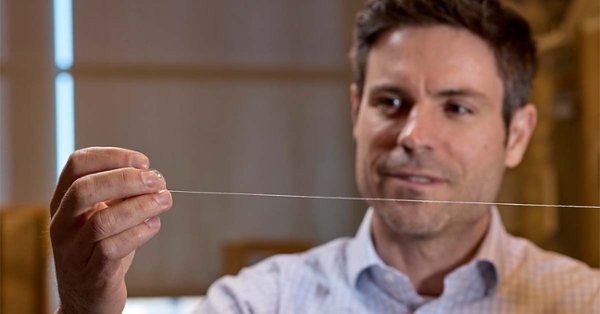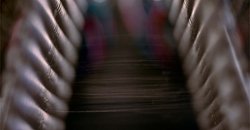Federal agency supports research to improve nanofiber production
Federal agency supports research to improve nanofiber production

A team of engineers from the Rowan-Virtua School of Translational Biomedical Engineering & Sciences and the Henry M. Rowan College of Engineering has developed novel technology for fabricating aligned nanofibers in continuous rolls of material. The project recently received a $511,931 Partnerships for Innovation grant from the U.S. National Science Foundation (NSF) to improve the efficiency of the manufacturing technology and to determine the most optimal path toward commercializing the technology. 
“This is a novel technology with capabilities that are desirable in industry and not yet possible,” said Vince Beachley, Ph.D., associate dean of research and innovation in the Rowan-Virtua School of Translational Biomedical Engineering & Sciences and associate professor in the Department of Biomedical Engineering. “The grant is about moving this technology from the laboratory to commercial production of aligned nanofiber materials.”
Polymer nanofibers, which have diameters one hundred times smaller than a human hair, have a broad range of applications, from filtration and sensors, to fuel cells and regenerative tissue engineering in the body.
There are two common orientations of these nanofibers: aligned and randomly oriented. Aligned nanofiber materials are stronger than their random counterparts. They also are more effective at transporting heat, electrical currents and fluid.
Continuous yarns made from specialized aligned nanofibers could be incorporated into smart textiles that interact with their surroundings. For example, top athletic apparel companies have interest in developing clothing that can collect data and monitor performance. Many commercial manufacturers produce randomly oriented nanofibers at scale. But the mass manufacture of aligned nanofibers has eluded researchers.
The research is led by principal investigator Beachley and co-principal investigator Nidhal C. Bouaynaya, Ph.D., associate dean for research and graduate studies in the Henry M. Rowan College of Engineering, and professor in the Department of Electrical & Computer Engineering.
As part of the grant, Rowan scientists will collaborate with Materic, a Baltimore-based custom manufacturer of electrospun nanofiber materials. Materic will help identify potential customers and markets for this nanofiber manufacturing technology and provide entrepreneurial training and real-world experience to Rowan students working on the project.
The main technical aspect of the grant involves improving the efficiency of the process. Presently, this method of manufacturing aligned nanofibers creates a great deal of wasted material. Researchers will create a machine-learning model to make the process less wasteful and more productive.
“Machine learning advances will allow us to precisely optimize aligned nanofiber manufacturing, reducing waste and improving quality, driving us towards commercial viability,” Bouaynaya stated.
“The device that we use is totally unique to our lab,” Beachley added. “Production efficiency is not that important for laboratory research, so it has not yet been thoroughly investigated. As we move this project toward commercial manufacture, increasing production efficiency is critical.”